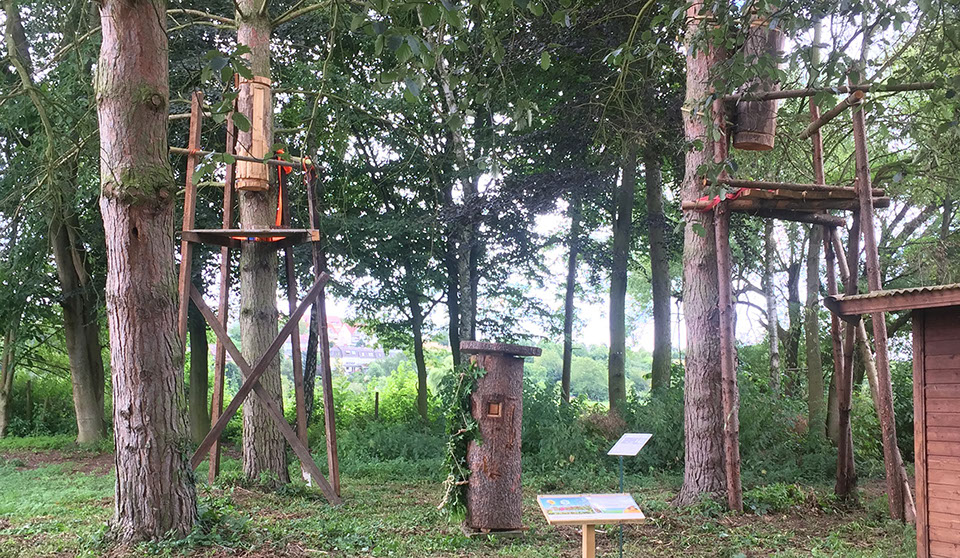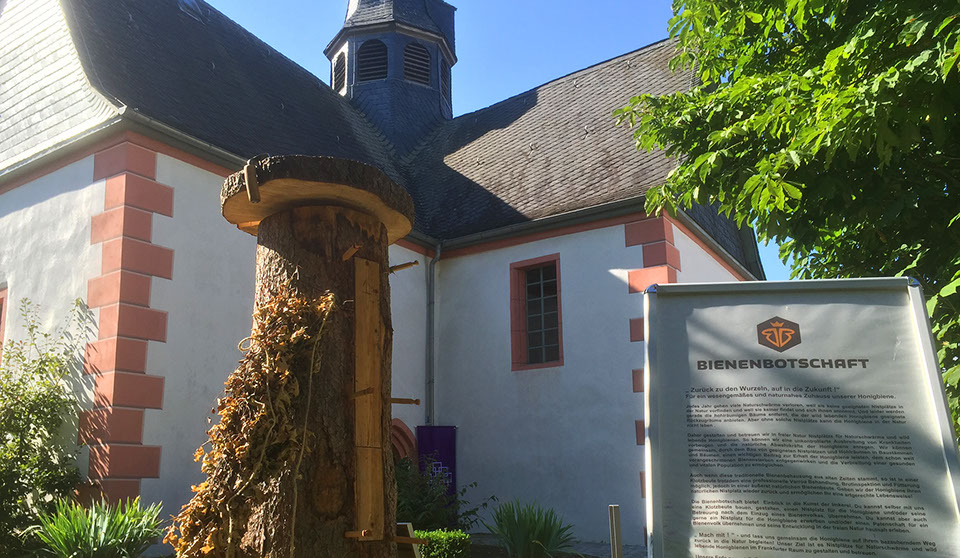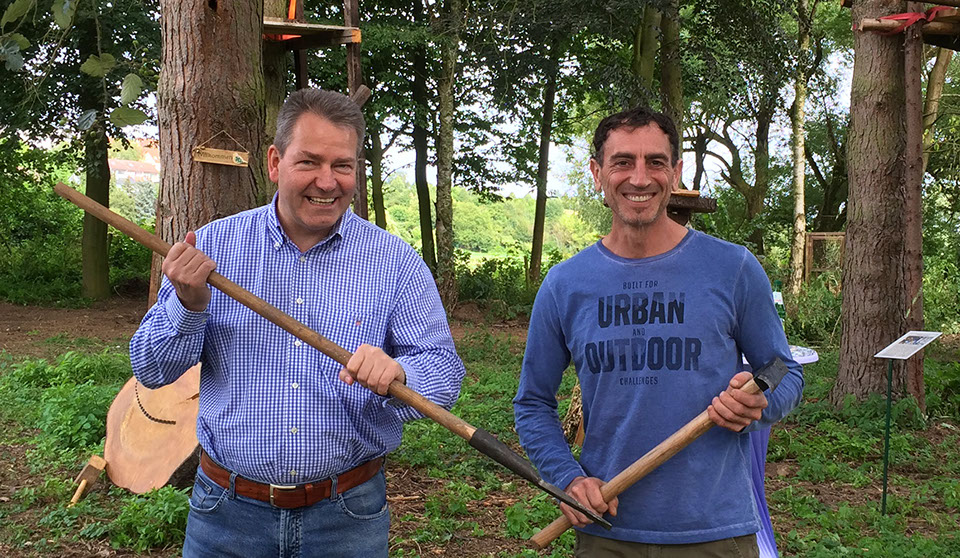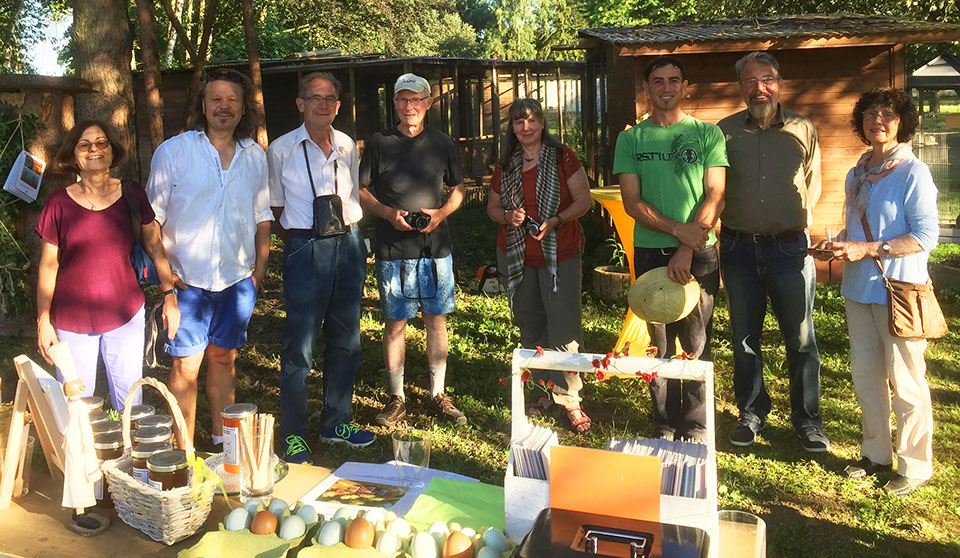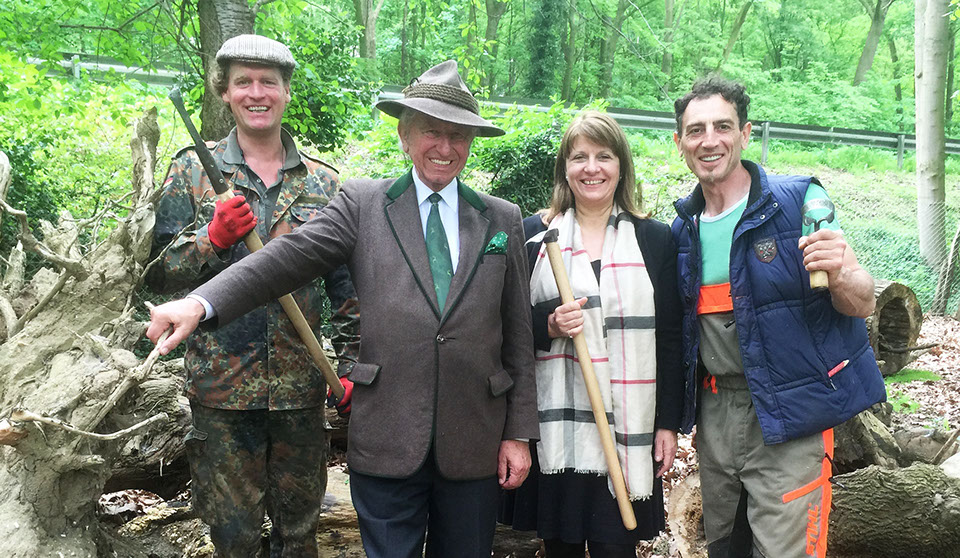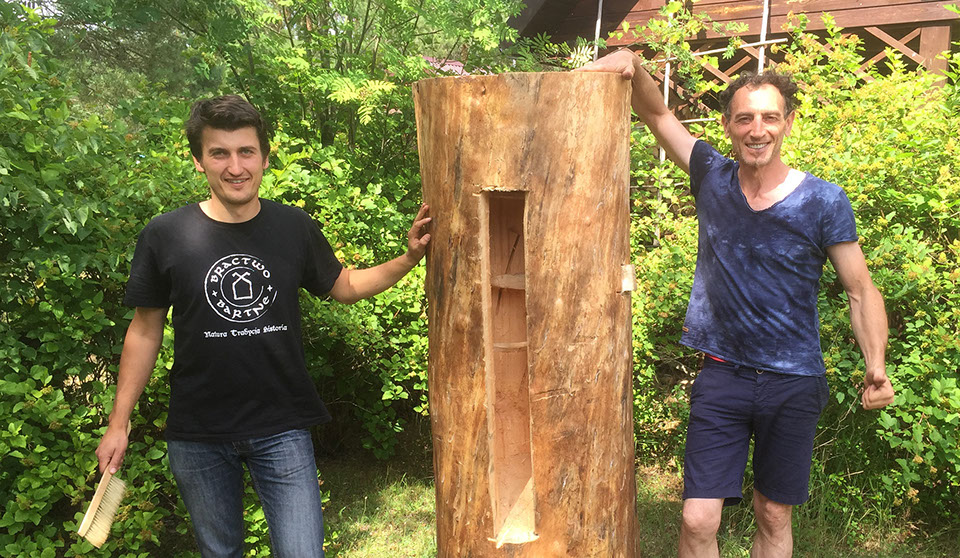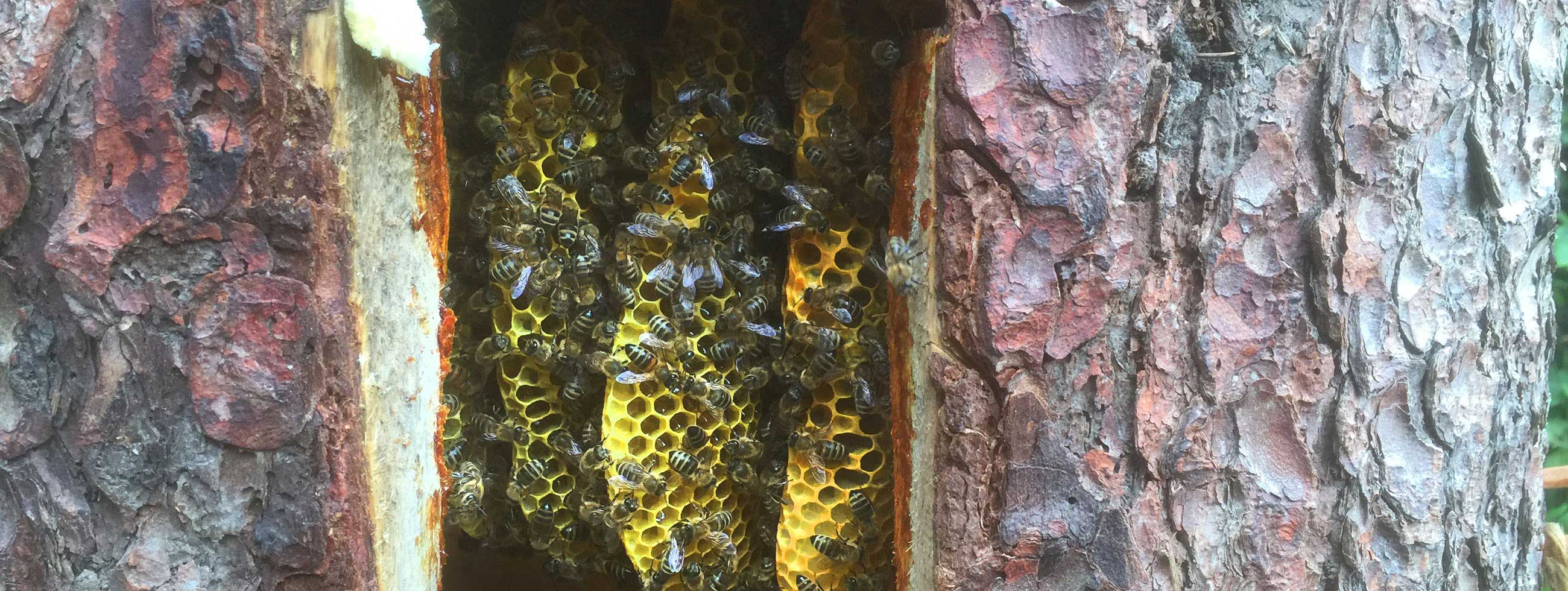
WHAT WE DO
Botanical Garden Frankfurt am Main
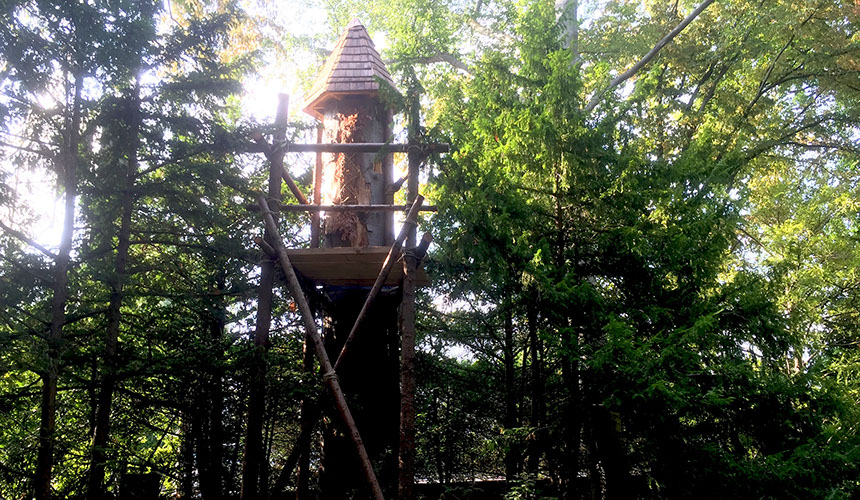
„Because of the contact to BIENENBOTSCHAFT, there is
Frankfurt’s first beekeeping tree in the Botanical Garden“
Rosemarie Heilig
Department for environment Frankfurt am Main,
Greeting words Frankfurter Bee Festival 2016
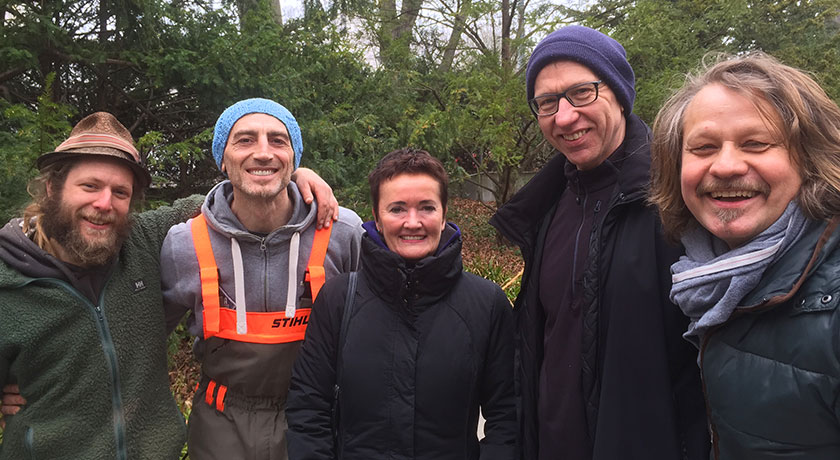
From left to right: Manuel Schüle (beekeeper and free tree-beekeeper from Switzerland), Antonio Gurliaccio (beekeeper, tree-beekeper and bee ambassador), Councilor Rosemarie Heilig, Frankfurt a. M. Department of the Environment, Manfred Wessel, Head of Botanical Garden Frankfurt a. M. and Moses M. Mrohs (bee ambassador)
Natural nesting sites for the swarming honey bee
Initiated by the environmental manager Rosemarie Heilig and supported by the head of Botanischer Garten Manfred Wessel, on March 12th and 13th the members of BIENENBOTSCHAFT Antonio Gurliaccio, Manuel Schüle and Moses M. Mrohs installed the first beekeeping tree in the middle of an european city. This natural nesting site has been occupied by honey-bees since summer 2016 and is taken cared of by BIENENBOTSCHAFT. Please come and have a look – the bees and we are looking forward to seeing you!
A project of BIENENBOTSCHAFT in cooperation with the Botanischer Garten Frankfurt am Main, environmental ministry and “Grünflächenamt” (= park authorities) of the city Frankfurt.
More information
PDF – annual program of Botanischer Garten, Frankfurt am Main, 2019
The forest home of the honeybee
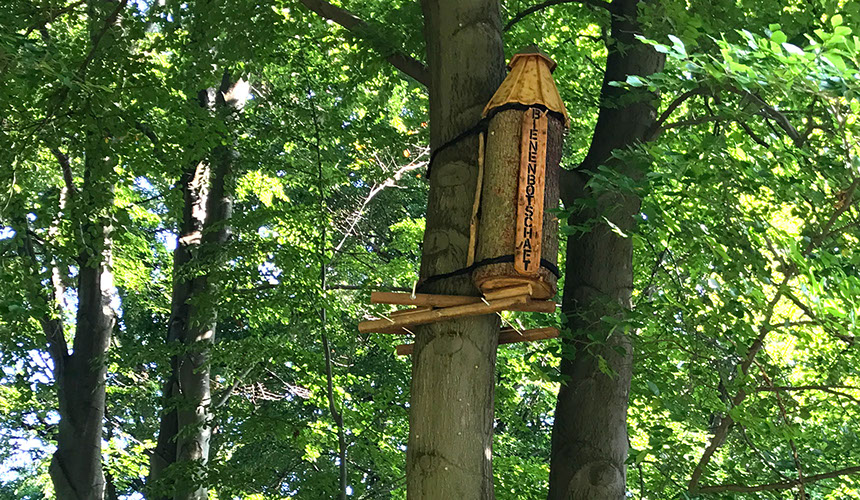
Supervised natural nesting sites for the honey bee living at wild in the forest
The importance of honey bees living at wild in trees for the ecosystems of the forest: The honey bee (Apis mellifera carnica, Apis mellifera mellifera) has been living nearly for the whole time of her geological development in forests. She is a forest inhabitant whose natural home are hollow trunks in our region. So bee communities have been developping in such hollow trunks in the course of evolution. The wild honey bee as a social, state building insect is producing a lot of bio mass during the year. Quite a lot of user communities are thus depending, numerous parasites, symbiontic bacteria, predatory insects, birds and mammals do find food.
Up to 30 species of insects, 180 spcies of mites and more than 8.000 micro organisms have been detected in habitats populated by bees. Especially the extremely important book scorpion, living in symbiotic relationship with the bees, plays an essential role in combating the Varroa mites. We are breeding book scorpions and settle them afterwards in the log-hives installed by us. There is no plan for taking bees’ products away during the care of the bee populations. All interventions are only made for control of the populations and prevention of diseases. Back to the roots and for a healthy future of our honey bees.
This pilot project is supported by:

Ein Pilotprojekt der BIENENBOTSCHAFT und Hessen Forst
Verändert nach den neusten Studien vom Biologen Torben Schiffer (beenature-project) wissenschaftlicher Mitarbeiter im Team HOBOS an der Universität Würzburg unter der Leitung von Prof. Dr. Jürgen Tautz.
Further projects
Impressions
